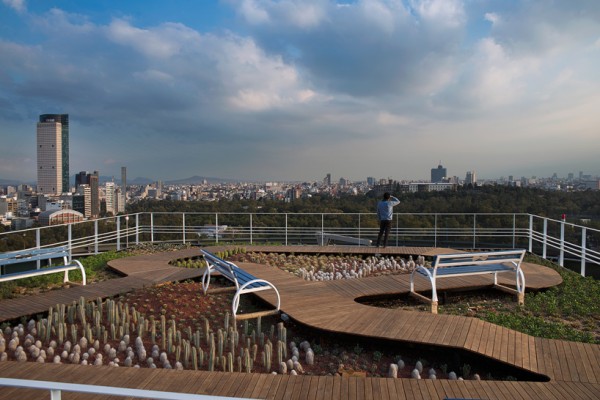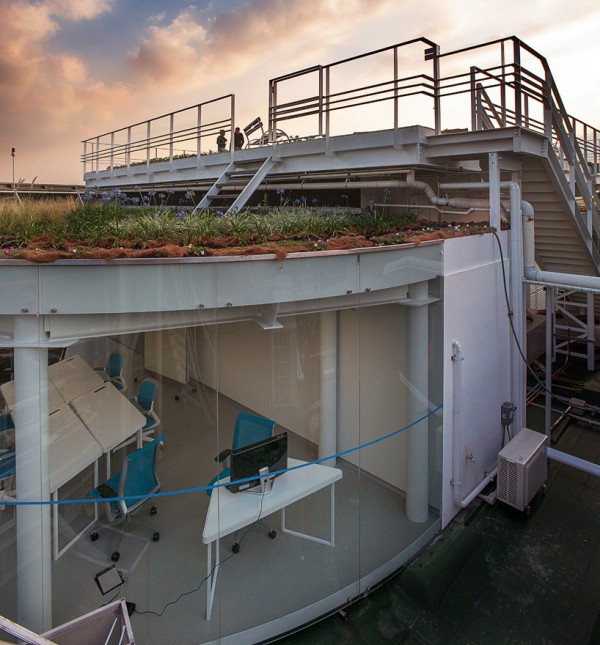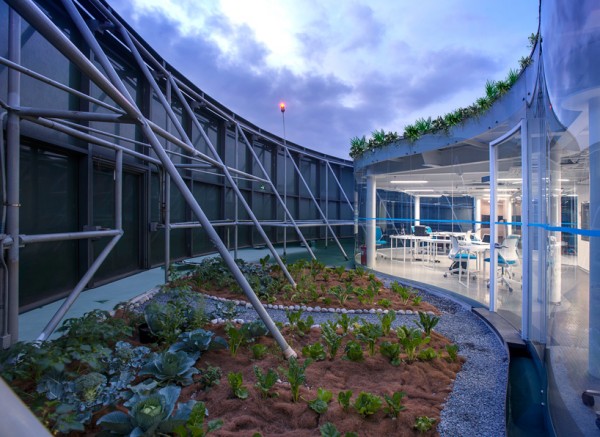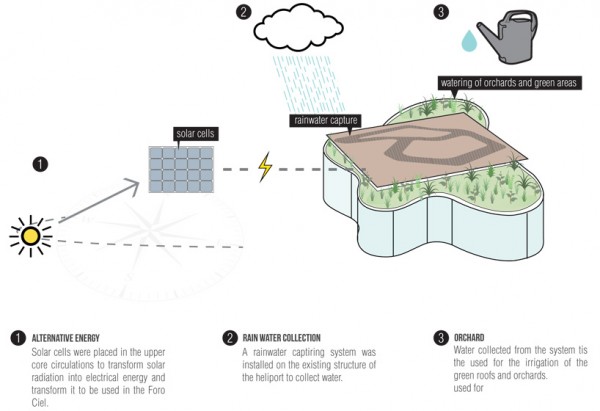In the 1970s and ’80s, no self-respecting corporate giant (or power-mad Bond villain, take your pick) would be caught dead without a sleek company helicopter and helipad atop its downtown vanity tower, so its executives could be whisked away without ever having to mix with the worker drones on the street. In the post-Great Recession world, however, the helipad has fallen out of favor as a too-conspicuous extravagance.
Rather than let these structures rust, the suits at the Coca-Cola Co.’s Mexico City headquarters decided to let their unused helipad go to seed in the form of a green roof and a reconditioned co-working space for its environmental financing subsidiary, Transformadora Ciel.

Working with Mexico City-based design firms Rojkind arquitectos and AGENT, Transformadora Ciel kept much of the practical, bare-bones support structure exposed and intact, but added new glazing, gardens and several renewable energy features to help reduce operational and construction costs.

The adaptive reuse project, completed in 2012, includes a completely modern, open-floor-plan office tucked into the circular space that was used as a support structure for the helipad above. Because the helipad is recessed into the existing roof of the 11-story Coca-Cola tower, workers only see a metal retaining wall from their workstations. To draw in the maximum amount of reflected natural daylight, the exterior of their office space is made entirely of curved, floor-to-ceiling windows.

Spectacular views of the sprawling city, however, can be had with a short jog up the original exterior staircase that leads to the old helipad surface. A wooden walkway meanders through an array of xeriscaped greenery, including cacti and other drought-tolerant plant life that are native to the semi-arid climate of Central Mexico. The old helipad is also equipped with solar panels to provide 3.84 kilowatts of photovoltaic power to run the efficient LED lighting in the offices below.

Between the office windows and retailing wall are several pocket gardens where workers can tend to vegetables fed by a rainwater retention system. Each year, Rojkind says, nearly 1,300 gallons of water are collected for irrigation use. The plants also absorb more than 178 pounds of CO2 annually.